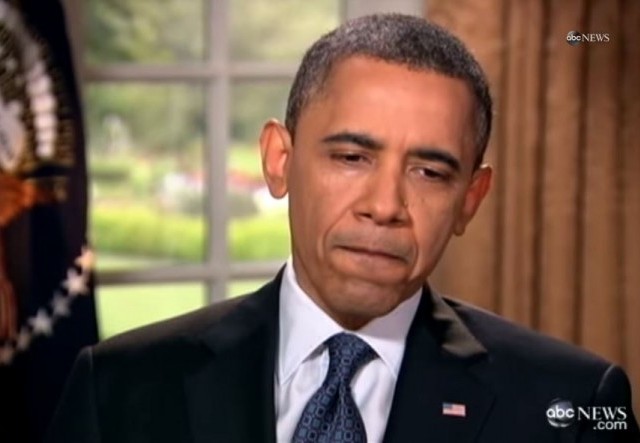SCOTUS Stops Obama’s Clean Power Plan

Yet another Obama administration initiative was halted by the U.S. Supreme Court this week. The Clean Power Plan (CPP) was a far-reaching effort by the Environmental Protection Agency (EPA) to control greenhouse gas emissions from coal-fired power plants under the Clean Air Act (CAA). If implemented, the CPP would have closed hundreds of coal-fired plants across the country and increased the production of wind and solar power, which are significantly more expensive to produce.
The CPP was challenged in court by energy companies, industry groups, and a coalition of 29 states, led by West Virginia. The litigants filed multiple applications for a stay, which would block the CPP from being implemented while the case proceeded.
Hitting the “pause” button
A three-judge panel on the D.C. Circuit Court of Appeals unanimously voted to deny the stay last month, and it was appealed to the Supreme Court, which, in a 5-4 ruling with the liberal Justices (Ginsburg, Breyer, Sotomayor, and Kagan) voting against, agreed to grant the stay. A stay is best understood as hitting the “pause” button, and not the final step in the litigation, but it does prevent the CPP from being implemented while the case proceeds.
This case was the first time the Supreme Court had granted a request to stay a federal regulation while it was being reviewed by a federal appeals court. As Jonathan Adler at the Washington Post noted, the ruling indicates that the Court has concerns about the EPA’s legal authority to impose the CPP, which “is based on a fairly aggressive reading of the relevant provisions of the Clean Air Act, most notably Section 111.”
In a follow-up article at the Post, Adler described the legal challenges as attacking the EPA not just for improperly exercising their legal authority, but as arguing that the EPA lacked any authority to impose the CPP in the first place:
It is not only the most ambitious climate-related initiative undertaken by the EPA, but it also relies upon unprecedented assertions of legal authority. And, to be clear, by “unprecedented” I mean just that — without precedent. This is not the same thing as saying that a specific argument or action is unlawful or wrong, only that it raises new legal questions that courts have not had cause to answer before.
The Court’s order was extremely brief, and offered no explanation for their decision, but a plausible answer may be found in another case challenging an EPA regulation.
The EPA has “pulled this stunt several times.”
Michael Greve, a law professor at George Mason University, notes that the EPA has a history of pulling stunts like this, overstepping their legal authority and demanding that energy companies undergo “massive planning and investment decisions” to comply with burdensome regulations while the litigation wends its way through the court system.
Greve wrote a blog post citing the Michigan v. EPA case, another case dealing with the EPA’s efforts to regulate fossil-fueled power plants, and opines that the outcome in that case may have provided a persuasive argument for the states challenging the CPP.
In Michigan, the Supreme Court eventually ruled that the EPA had in fact violated the CAA and remanded the case back to the D.C. Circuit, but the regulation in question had not been stayed during the years of litigation. This allowed the EPA to argue to the D.C. Circuit that most plants were already in compliance with the regulation or nearly there. As a result, the D.C. Circuit allowed the regulation to remain in effect, even though the Supreme Court had said that it was unlawful.
Basically, the EPA was allowed to force power plants to incur substantial compliance costs — an estimated $10 billion a year — before the Court ruled the regulation was unlawful, and then they got away with it because the damage was already done.
West Virginia Attorney General Patrick Morrissey told the New York Times, “We are thrilled that the Supreme Court realized the rule’s immediate impact and froze its implementation, protecting workers and saving countless dollars as our fight against its legality continues.”
Another embarrassment for the Obama administration
The Supreme Court’s stay blocking the implementation of the CPP is the latest in a long line of court losses for Obama. As the FiveThirtyEight blog observed last June, the Obama administration has the lowest winning percentage of any president — less than 50 percent — going all the way back to Truman.
Image via FiveThirtyEight.
Past losses for the Obama administration include a number of other environmental regulations, property rights cases, labor regulations, and the DAPA executive order granting amnesty to illegal immigrants by protecting them from deportation. There have also been a number of cases where the Supreme Court ruled unanimously against Obama.
“When the administration loses significant cases in unanimous decisions and cannot even hold the votes of its own appointees — Justices Sonia Sotomayor and Elena Kagan — it is an indication that they adopted such an extreme position on the scope of federal power that even generally sympathetic judges could not even support it,” said Ilya Somin, a constitutional law professor at George Mason University.
This ruling also jeopardizes the climate change pact that the United States signed last December, because the provisions of the CPP were used by the Obama administration to prove that our country would be taking significant actions in restricting power plant emissions, and the other nations should follow suit in agreeing to limit their emissions.
Follow Sarah Rumpf on Twitter @rumpfshaker.
CLICK HERE FOR FULL VERSION OF THIS STORY